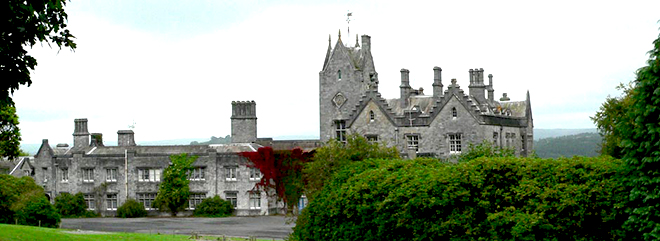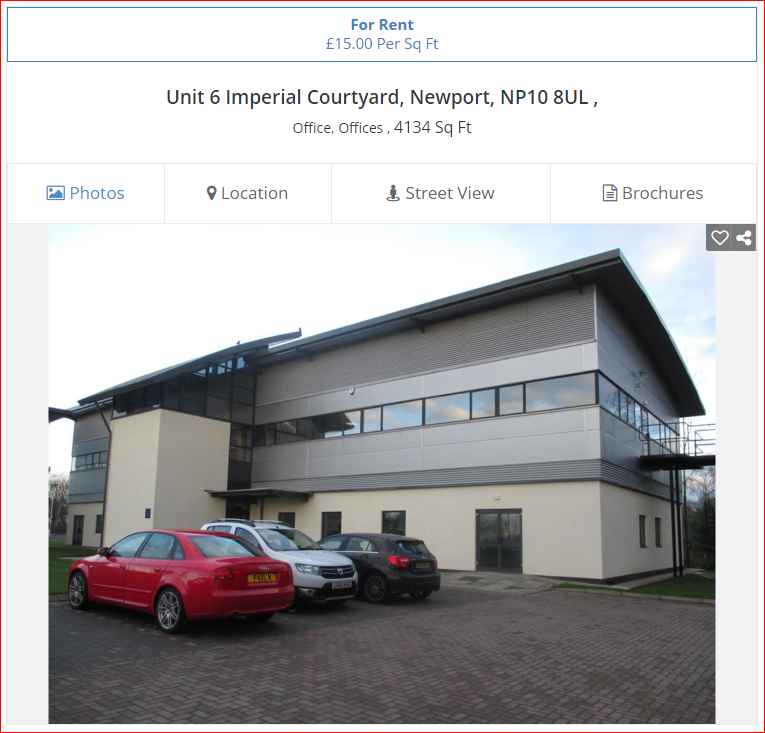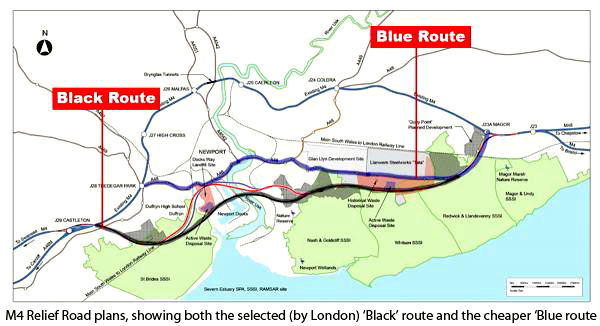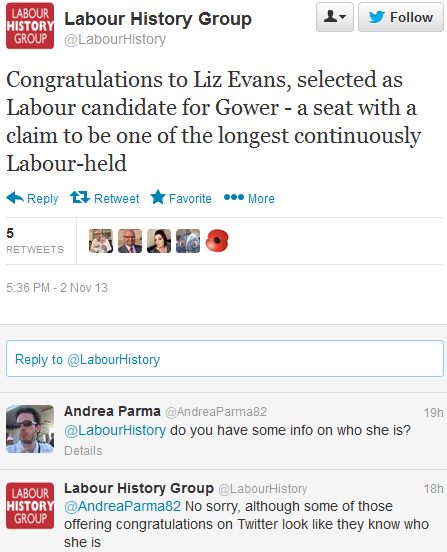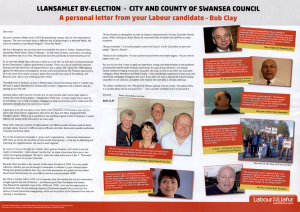BY A GUEST WRITER
◊
Keeping tabs on the incestuous, grant-fuelled world of the Welsh heritage industry could be a full-time job in itself. It seems there is no end to the number of charitable trusts set up to take advantage of the funding available ostensibly to rescue this or that old ruin or building, with some familiar names cropping up here, there and everywhere, often with tenuous links to our country and its people.
♦
A linguistic digression
Anyone who lives and works in more than one language and has given the matter some thought will tell you that, depending on which language they use, the world can sometimes look rather different. This is often true of conceptual words, for example.
Watching debates in county councils sometimes brings this into sharp focus. One side or the other will table a motion (cynnig = offer, proposal in Welsh). Opponents may then try to change or wreck it by tabling an amendment. In Welsh, that’s a gwelliant (=improvement).
By no means all amendments are a gwelliant.
In English the vast majority of conceptual words are derived from Latin or Greek. Heritage, perhaps appropriately in this context, comes down to us from Norman French and means something you have inherited.
You could inherit a property in Australia or downtown Manhattan without ever having set foot in either place, and your good fortune would be down to luck of the draw and the legal system.
In Welsh the word is treftadaeth, and if we break that word down, as children are encouraged to do at school, we get tref (place/homestead) + tad (father) + aeth, a suffix which very roughly means ‘something to do with’. In other words, places linked to your forebears, an idea not a million miles removed from hen wlad fy nhadau.
The difference between the legalistic connotations of the Norman French and the Welsh word, rooted in real people and places, goes to the heart of the debate which has been raging on the pages of this blog.
♦
Ystrad Fflur
To its credit, the Ceredigion Herald picked up on the recent piece on this blog about plans to ‘enhance the visitor experience’ at Ystrad Fflur and help locals to ‘enhance senses of their own identity and wellbeing’, whatever that means, and it contacted Professor David Austin.
In response to questions, the professor huffed and puffed at some length about the wonderful nature of the site and was clearly reluctant to go into mundane details about what precisely was being planned and where the money was coming from.
When pressed, he gave answers which left a lot of wriggle room.
The Strata Florida Trust has acquired the farmhouse, he said, not mentioning the buildings which cluster around it (although the trust’s website says it has acquired those too).
The money had come from a private donation, and he was not prepared to say more on that subject.
The Acanthus Holden plan (the exclusive hotel with attached visitor centre) was to have been financed privately, but had now been ditched.
The only link to Cambrian Heritage Regeneration Trust (CHRT, the Llanelly House body) was CHRT’s chief executive Claire Deacon, he claimed.
What happened to the £200,000 donation CHRT received to buy the buildings at Mynachlog Fawr therefore remains a mystery.
Plans, also shrouded in mystery, to develop the old farm, would be financed by a variety of means, he explained:
“There is other funding available to us, which is not Heritage Lottery Fund money, and we are in the process of finalising the arrangements for the allocation of that money to the Strata Florida Trust.”
That does not quite rule out HLF funding, and raises more questions than it answers.
Who is funding this, and why the secrecy? Is cash-strapped Ceredigion County Council involved, for example?
One of the contributors to comments on the original article about Ystrad Fflur suggested that there might be some form of local consultation. In his interview with the Herald, Professor Austin makes no mention of a consultation, and his website is also silent on the subject.
What we are about to get, it seems, is a fully fledged project for the commercial exploitation of Ystrad Fflur with no public consultation and zero transparency about the details of the development.
♦
Adfer Ban a Chwm
Adfer Ban a Chwm (ABC), or to give it its more prosaic English name, “Revitalise Hill and Valley”, is another trust, this time registered to an address in trendy Islington, London where Tony and Gordon made their infamous Granita Pact.
Its annual report for the year to 31 March 2015 says that the charity’s objectives “are to preserve for the benefit of the people of Carmarthenshire, Powys, Wales and the Nation” what it terms “constructional heritage”, and in particular the pretty bits.
Presumably “the Nation” is not the same as Wales.
The website expands on this a little, saying that the trust aims to “address the issues of vernacular buildings in rural Wales and the need for affordable housing in the area”.
Adfer Ban a Chwm’s leading light is an architect, Roger Mears, pictured here at what would appear to be the Henley Regatta, old boy:
ABC (it should really be ABCh) was set up eight years ago and appears to have spent most of the period since applying for and receiving grants from, among others, the Brecon Beacon National Park Authority, the Heritage Lottery Fund, the Brecon Beacons Trust, the Community Foundation in Wales and the Quaker Housing Trust. More trusts and foundations than you can shake a stick at, in fact.
It is not at all clear what ABC has actually achieved in those eight years apart from a year of planning, researching and writing a report in 2014-15 and raking in grants.
More grant money came in in May 2016 enabling it to proceed with its Grass Roots Heritage Programme, “a one-year project (the first year of a three-year programme) which we hope will identify buildings that we can turn into affordable homes.”
So after all that time, all that report writing and all those (successful) grant applications, it would seem that not a single building has been restored and not a single affordable home created, although the trust hopes to be able to identify potential candidates by this time next year.
Over the next 12 months, therefore, they will carry out “mapping and community work” in and around Myddfai, Carmarthenshire:
“This information will be used to underpin the next stage of the ABC project, and be broadcast widely in a series of interactive community workshops, where the social history of the buildings will be elaborated by gathering local memories and stories, and where community and student volunteers will learn about how to record old buildings, what to look for and what these buildings have to tell us, how they might be repaired and conserved and turned into affordable homes.”
Helping ABC along the way by working with the trust’s executive director on partnerships has been our old friend, Claire Deacon, CEO of Cambrian Heritage Regeneration Trust, saviour of Llanelly House and the Merthyr YMCA, project director at Mynachlog Fawr, lecturer and consultant, and former conservation officer with the Pembrokeshire Coast National Park Authority.
All in all, then, one of the most successful “Welsh” buildings preservation trusts: loads of grants harvested and no sign of any actual buildings. Perhaps Griff Rhys Jones will turn it into a documentary series.
♦
Golden Grant
Staying in Carmarthenshire for a moment, let’s take a trip to Gelli Aur (or Golden Grove as some would have it), the former home of the Cawdors near Llandeilo.
The huge late Regency pile has been knocked about a bit and badly neglected since the last of the Cawdors moved out in the 1930s. Carmarthenshire County Council, which had a lease on the place, can take credit for the worst of the damage.
At one time the council and the ever-enthusiastic Meryl Gravell hoped to turn the place into a kind of business incubator for media start-ups. Their chosen partner disappeared with a lot of public money which was never seen again. Ever more exotic investors came and went, until finally the house and 100 acres were sold to a London art dealer, Richard Christopher Salmon.
Salmon has renovated a part of the house and made the roof of the main building weatherproof, but one of his first acts after taking over was to set up a trust.
The Golden Grove Trust, which has no known sources of income, was gifted with a debt of £1.45 million by Mr Salmon, a sum which apparently represents the purchase price of the near derelict house and dilapidated grounds. If that was what he actually paid for this massive liability, someone saw him coming.
The debt is due to be repaid – somehow – to Mr Salmon in just over a year from now.
Filing accounts is clearly not one of Mr Salmon’s favourite activities. The Charity Commission website shows that the 2012-13 accounts were received 583 days late, while the report for 2013-14 was 218 days late. The annual report for 2014-15 is currently 78 days late.
Despite this and the fact that the trust was close to being struck off by the Charity Commission, the charity was last year awarded a grant of just under £1 million by Edwina Hart, Meryl’s old buddy, for the restoration of the park which occupies around 60 of the 100 acres of land and includes, or included (it is difficult to know which tense to use) a public park with a playground, lake, café and arboretum.
The Carmarthenshire Herald reported a couple of weeks ago that there were a growing number of complaints from the public that the park was closing on more and more days, and that public access signs had been removed.
With some difficulty the newspaper managed to track down Mr Salmon who thought, but did not seem very sure, that the closure might have something to do with adverse weather conditions, and concerns of the insurers on health and safety grounds.
Readers in Carmarthenshire may struggle to recall unusually bad weather in recent months, but there you are.
Mr Salmon was clearly not best pleased with critical blog posts and press reports published in 2015, and told the Herald that he could have shut the whole place up and kept it private.
But then Edwina wouldn’t have given him £1 million, would she?
Another one to watch.
♦
This is a local fund run by local people

As we have seen, grants are available from all sorts of different bodies, but what the Americans would call the 800 lb gorilla in this jungle is without doubt the Heritage Lottery Fund (HLF).
The fund’s website lists 2,785 projects which have received funding in Wales. Amounts vary from a couple of hundred pounds, to mammoths such as Cardigan Castle (£6.5 million) and Llanelly House (£3.6 million).
The HLF divides the UK into regions and nations, and each of these has its own committee and permanent head. The head of HLF Wales is someone called Richard Bellamy, whose previous roles include working on the Channel Tunnel, the National Trust, English Nature and Cornwall Council. If he has a connection with Wales, he is keeping quiet about it.
The committee, which decides on applications in Wales, currently has eight members, and according to HLF’s website:
“The committees are made up of local people recruited through open advertisement. Committees are supported by grant-assessment teams based in the relevant region or country.”
In theory, then, anyone can apply. Who selects the successful candidates is not clear, but it clearly helps if you have worked for English Heritage or the National Trust and, ideally, come from somewhere in or near Cardiff.
Chairing the committee is the august personage of Baroness Kay Andrews of Southover OBE. Andrews, who grew up at Ystrad Mynach, was parliamentary clerk in the House of Commons before becoming policy adviser to Neil Kinnock, from where she went on to found and run her own charity, Education Extra.
On elevation to the peerage, Andrews clearly felt so strongly about her Welsh roots that she chose Southover in Sussex for her title, and it is from Sussex that she claims travel expenses when going to the House of Lords.
The HLF’s rule on appointing ‘local people’ to the Welsh Committee does not seem to be taken that seriously, but no doubt there was nobody ‘locally’ up to the job, just as there were no suitable Welsh candidates for the post of Head of HLF Wales.
But we should all be grateful, shouldn’t we?
♦
~ ~ ~ ~ ~ ~ ~ ~ ~ ~ ~ End ~ ~ ~ ~ ~ ~ ~ ~ ~ ~ ~
♦
Jac says . . . In these recent posts – and, indeed, in the one I’m working on now – we encounter groups and individuals who have hit on a method of subsidising their move to Wales and/or maintaining themselves once they’re here. Human nature being what it is, this is understandable; what is less easy to understand is why these people are being funded.
To explain how this scam system operates . . . let’s say you want to buy and renovate a somewhat dilapidated old house. And let’s say you pay £100,000 for that property knowing that it will cost another £100,000 to restore. That house will therefore cost you £200,000. But that’s a mug’s way of doing things. What those we’re discussing do is buy a property and get someone else to pay for the renovation. Sticking with the same figures, this means that for an outlay of just £100,000 they get a property worth £200,000.
To which you respond, ‘Ah, but Jac, you’ve been on the Malbec again, and it’s making you forget that these are important buildings, of great historical or cultural significance’. I suppress my usual riposte of ‘bollocks!’ to offer the following argument.
If these buildings are indeed of great historic or cultural significance then they should be in public ownership – WELSH public ownership. If they are not of great historic or cultural significance then no public money should be expended, whether directly or in grants to self-appointed ‘heritage trusts’. The worst of all possible options is to have a building or site of genuine national importance privately owned but maintained by public funds.
This is nothing less than submitting to a form of blackmail – ‘This place I own is very important (take my word for it), but if you don’t give me lots of money I’ll let it decay/fall down/ be turned into a burger joint’.
As I and others have argued, Wales needs a new body, answerable to us, the Welsh people, that protects what is important to us and our past with sympathy and respect. A new body to replace the English National Trust, Cadw, and all the strangers in our midst with their grant-grabbing ‘trusts’.
It so happens that the ‘Welsh’ Government is currently inviting observations on ‘Proposals for secondary legislation to support the Historic Environment (Wales) Act 2016 and draft guidance’. The same shower also claims to want ‘your views on this technical advice note which provides detailed planning advice on the historic environment in Wales’.
So tell them what you think they should do, the deadline is October 3rd.



